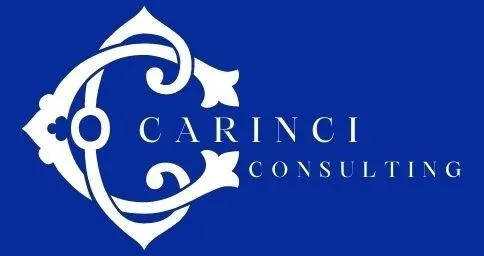
Grant Writing Secrets: The ‘X’ Factor Your Proposal Needs
"Storytelling is the most powerful way to put ideas into the world today.” - Robert McKee
What makes one grant proposal stand out while another barely gets a second glance? It’s not just about following the guidelines or presenting a solid budget—it’s about delivering that elusive “X” factor that makes your proposal irresistible to funders. This secret sauce combines strategy, storytelling, and precision to transform a good proposal into a winning one.
Ready to unlock the secrets to success? Let’s dive into the elements that will give your grant proposal the edge it needs.
Start with a Compelling Problem Statement 📢
Your problem statement is the foundation of your proposal—it’s where you convince funders that your project is worth their investment. The key is to balance urgency with opportunity. Paint a vivid picture of the issue you’re addressing, using compelling data, real-world examples, and emotional resonance to grab the funder’s attention.
For example, instead of simply stating, “Literacy rates in our community are below average,” say, “In our community, 1 in 4 children struggles to read at grade level, limiting their future opportunities. Our program provides the tools and support to change that trajectory.” The difference? The latter creates a sense of urgency and hope, showing why your solution matters.
Pro Tip: Use a mix of quantitative data (e.g., statistics) and qualitative elements (e.g., personal stories) to make your problem statement impactful.
Align Your Goals with the Funder’s Mission🔗
Funders are looking for alignment between their priorities and your project. Your proposal should clearly demonstrate how your goals advance their mission. Research is critical here—dig into their grant guidelines, past funding history, and even their public statements to understand what they value most.
For instance, if a foundation focuses on health equity, emphasize how your program addresses disparities in healthcare access for underserved communities. Draw direct connections between your project’s objectives and the funder’s stated goals to show you’re a perfect match.
Pro Tip: Include language from the funder’s mission statement or guidelines in your proposal to reinforce alignment. Just be sure to adapt it to your own voice rather than copying it verbatim.
Tell a Story That Sticks 📖
Grant proposals aren’t just about facts and figures—they’re about people. A great story can make your proposal memorable by putting a human face on your work. Use storytelling to illustrate the impact of your project, focusing on the people or communities you serve.
For example, instead of describing your program in abstract terms, introduce a beneficiary whose life has been transformed by your work. Share their challenges, the support they received, and the outcomes they achieved. Funders are more likely to remember—and invest in—a story that tugs at their heartstrings.
Pro Tip: Use the STAR method (Situation, Task, Action, Result) to structure your stories for maximum clarity and emotional impact.
Back It Up with Data 📊
While storytelling creates an emotional connection, data provide credibility. Funders want to see evidence that your program works and that you can deliver measurable results. Use quantitative metrics to demonstrate the effectiveness of your approach, and include clear benchmarks for success.
For example, if you’re running a workforce training program, provide stats like “85% of participants secured employment within three months of completion.” Use visuals like charts, graphs, or infographics to make complex data more digestible and compelling.
Pro Tip: Don’t overwhelm the reader with too much data—focus on the metrics that matter most to the funder’s priorities.
Show Your Capacity to Deliver 🏗️
Funders want to know that their investment will be used effectively. Demonstrate your organization’s capacity to deliver results by highlighting your team’s expertise, past successes, and operational readiness. Be specific about the resources and systems you have in place to ensure success.
For instance, describe your team’s experience managing similar projects, your established community partnerships, and the tools you use to track outcomes. This reassures funders that you have the skills and infrastructure to deliver on your promises.
Pro Tip: Include letters of support from partners or testimonials from past funders to add credibility.
Craft a Realistic and Transparent Budget 💵
Your budget is more than just numbers—it’s a reflection of your organization’s priorities and planning. A well-crafted budget should be both realistic and transparent, showing exactly how the funding will be used to achieve your goals.
Break down your costs into clear categories, such as personnel, program supplies, and administrative expenses. Be prepared to justify each expense and show how it contributes to the project’s success. Avoid underestimating costs just to make your budget look lean; funders value accuracy and foresight.
Pro Tip: Include a narrative budget section that explains your numbers in plain language. This helps funders understand the “why” behind your costs.
Include a Strong Evaluation Plan ✅
A great proposal doesn’t just promise results—it shows how you’ll measure them. Your evaluation plan should outline the methods and tools you’ll use to track progress and assess outcomes. Be specific about the data you’ll collect, how you’ll analyze it, and how you’ll share results with the funder.
For example, if your goal is to increase student test scores, describe the pre- and post-assessments you’ll use, the timeline for data collection, and the benchmarks for success. A strong evaluation plan demonstrates accountability and a commitment to continuous improvement.
Pro Tip: Highlight how you’ll use evaluation results to refine your program, showing funders that their investment will have a lasting impact.
Polish, Proofread, and Perfect ✍️
Even the best proposal can be derailed by typos, unclear language, or inconsistent formatting. Take the time to polish every section, ensuring that your writing is clear, concise, and professional. A well-written proposal reflects the care and attention your organization will bring to the funded project.
Have multiple people review your proposal to catch errors and provide feedback. Better yet, enlist someone unfamiliar with your work to ensure your ideas are easy to understand.
Pro Tip: Use tools like Grammarly to refine your writing and ensure it’s error-free.
The X Factor Is Within Reach
The “X” factor isn’t magic—it’s a combination of strategy, storytelling, and execution that transforms a grant proposal into a winning one. By focusing on alignment, crafting a compelling narrative, and demonstrating your capacity to deliver results, you’ll create proposals that stand out in even the most competitive funding pools.
Ready to level up your grant-seeking efforts?
At Carinci Consulting, we specialize in helping nonprofits unlock the secrets to grant success. Let’s work together to make your next proposal your best yet.
🗓️ Schedule a complimentary strategy session.
Have questions? 📨 Email us at jennifer@carinciconsulting.com.
Office: Lexington, SC
Site: www.carinciconsulting.com

Call: 302-383-4724
Email: jennifer@carinciconsulting.com


